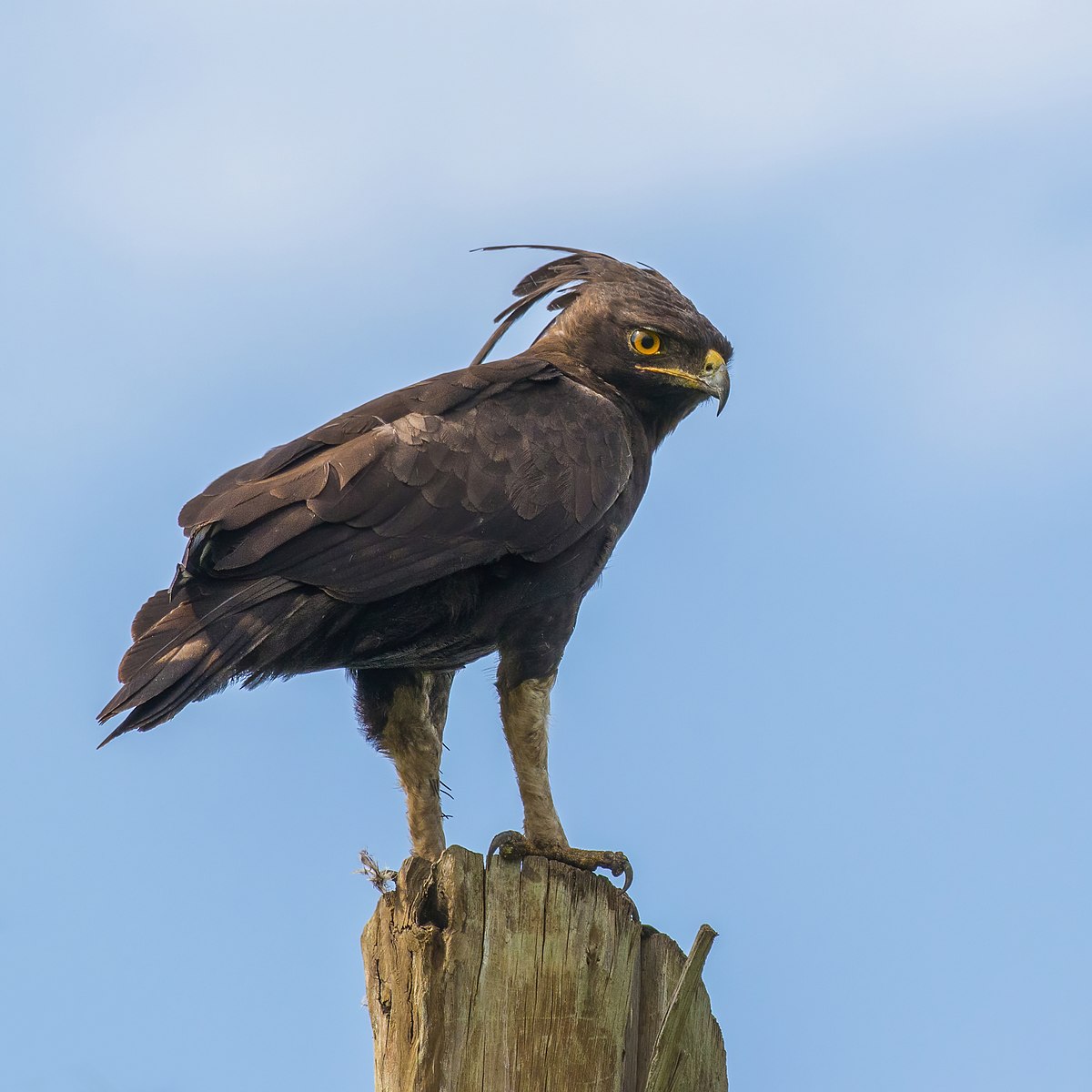The crested eagle, also known as the Morphnus guianensis, is a large bird of prey native to Central and South America. While the exact lifespan of the crested eagle in the wild is unknown, it is estimated that they may live for a similar duration as their closest relative, the harpy eagle, which has a lifespan of 25-35 years.
Crested Eagle Lifespan: A Closer Look
Crested eagles are known to be long-lived birds, with a lifespan that can span several decades. Based on the available data on their close relative, the harpy eagle, it is believed that crested eagles may have a lifespan of around 25-35 years in the wild.
However, it’s important to note that the exact lifespan of the crested eagle can vary depending on various factors, such as their habitat, access to food, and the presence of predators. Additionally, the lifespan of individual crested eagles may differ due to genetic and environmental factors.
Habitat and Distribution of Crested Eagles
 Image source: Long-crested eagle By Charles J. Sharp
Image source: Long-crested eagle By Charles J. Sharp
Crested eagles are found in humid, lowland forests, particularly in rainforests, gallery strips, and forest ravines. They have a wide distribution, ranging from Northern Guatemala to French Guiana, and are also found in the Amazonian basin in Brazil.
These eagles are non-migratory, meaning they do not undertake long-distance movements throughout the year. Instead, they maintain a stable territory within their preferred habitat, which helps to ensure their survival and longevity.
Hunting and Feeding Habits of Crested Eagles
Crested eagles are solitary birds and have a “sit and wait” hunting strategy. They perch on a high point and scan the ground for prey, swooping down to catch it with a gliding flight. Their diet mainly consists of smaller birds, mammals, snakes, and lizards, but they have also been known to feed on larger mammals such as capuchin monkeys, tamarins, woolly monkeys, opossums, and kinkajous.
The crested eagle’s unique hunting adaptations, such as their shorter wingspan and strong legs and talons, allow them to navigate through the dense foliage of the rainforest and capture prey that is often much larger than themselves.
Breeding and Nesting Behavior of Crested Eagles
Crested eagles have a unique breeding and nesting behavior. During their breeding season, the female builds a huge, shallow, cup-shaped nest high in the trees. The male is responsible for sourcing food and protecting the nest from potential predators.
The female lays one to two eggs, and the incubation period lasts for approximately 45-55 days. During this time, the male provides food for the female, ensuring that she can focus on incubating the eggs and caring for the hatchlings.
Conservation Status and Threats to Crested Eagles
The crested eagle has a conservation status of “Near Threatened” due to human interference and deforestation. As their habitat continues to be fragmented and destroyed, the population of crested eagles has declined, putting their long-term survival at risk.
Efforts to protect and conserve the crested eagle and its habitat are crucial to ensuring the continued existence of these majestic raptors. Conservation organizations and local communities are working to raise awareness, implement sustainable land-use practices, and protect the remaining crested eagle populations.
Conclusion
The crested eagle is a fascinating and enigmatic bird of prey, with a lifespan that is estimated to be around 25-35 years in the wild. These majestic raptors are adapted to thrive in the dense rainforests of Central and South America, but their long-term survival is threatened by human activities.
By understanding the unique characteristics and behaviors of the crested eagle, we can better appreciate the importance of protecting these birds and their habitats. Through collaborative conservation efforts, we can ensure that the crested eagle continues to soar high above the canopy for generations to come.
References:
- Operation Migration. (n.d.). Crested Eagle: The Ultimate Guide. Retrieved from https://operationmigration.org/crested-eagle-the-ultimate-guide/
- Animalia. (n.d.). Long-crested eagle – Facts, Diet, Habitat & Pictures on Animalia.bio. Retrieved from https://animalia.bio/long-crested-eagle
- Animal Diversity Web. (n.d.). Spilornis cheela – crested serpent-eagle – Animal Diversity Web. Retrieved from https://animaldiversity.org/accounts/Spilornis_cheela/.

